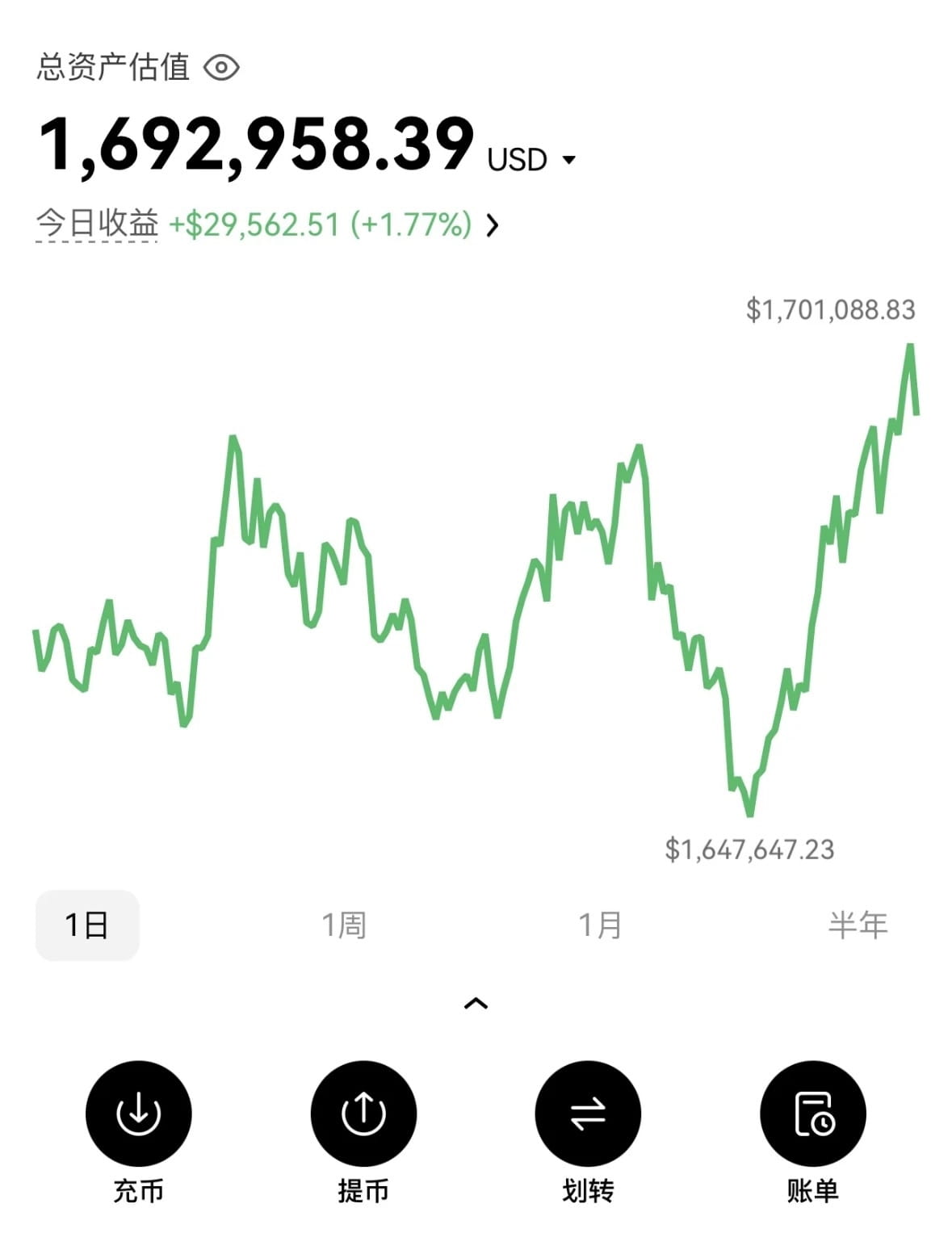After sending the child off in the morning, I return home to eat breakfast and start trading preparations around 9 o'clock. I first record the trading volume, average price, and profit-loss ratio from the previous day and jot down a few insights.
In my view, trading cryptocurrencies is not gambling; it's more about the struggle with one's own discipline. I focus on a dozen or so cryptocurrencies, and from 9:30 to 10:50 am is my most focused period; during this time, I hardly speak, concentrating fully on monitoring the market and adjusting positions to capture market rhythms through T+0 operations.
The afternoon market usually has smaller fluctuations; I check the market on my phone and quietly wait if there are no suitable opportunities. Before four o'clock, I basically finish my trading work for the day. Afterwards, I either go for a run in the park, go fishing to relax, or sometimes just turn off the computer and rest my eyes.
After dinner, while my child does homework, I review and write my trading journal, occasionally answering questions in the community. If the market is particularly dull, I might drive to the outskirts to fish, keeping my trading app open and placing orders when there's action in the market, so I can reap rewards while fishing.
Core Principle of Trading: Cash is king, never be fully invested.
After spending a long time in the crypto space, you come to understand that market fluctuations are not scary; the most frightening thing is to have no cash in your account, watching opportunities slip away. I never operate with a full position and I won't heavily invest in a single cryptocurrency; I always keep over 30% of liquid funds in my account, controlling risks through diversified positions and dynamic adjustments.
When the market is strong, gradually increase your position; if the trend is unstable, promptly reduce your position to save yourself. A basic logic is: the account is not for betting on the future, but to survive in the market. As long as you stay in the market, there will always be opportunities for a comeback.
Six survival lines that retail investors must adhere to: deviation may lead to exit.
Taking profits and cutting losses is a hard rule, not a suggestion: seeing the market correctly but not securing profits is just empty joy; misjudging the market without stopping losses is akin to opening the gates of hell.
Refuse to bottom-fish or top-pick; going with the trend is the right path: bottom-fishing and top-picking are gambler's behaviors; a prudent approach is to earn the certain profits during the middle phase, as the market will always have trending opportunities to follow.
A rise without volume is often an illusion; beware of hidden traps: an increase without trading volume is likely just a solo performance by the main players, do not become a bag holder.
Respond quickly to good news, do not chase highs after missing the first wave: opportunities are fleeting; if you can't grab the leading cryptocurrencies, position yourself in those that follow.
In a consolidating market, it's advisable to rest; do not gamble on luck: the market is in a state of fluctuation 90% of the time, with major uptrends accounting for only a small fraction. Don't rush after missing a major uptrend; opportunities will come again.
A sharp decline is not despair, but a signal of opportunity: the true bottom often appears when fear is at its peak. While others panic and sell, you calmly pick up bargains, and that's where the profit lies.
MACD Continuous Divergence Strategy: The secret to stable annual growth.
This strategy is not some magical skill, but a combination of discipline and data. Its core lies in: MACD continuous divergence, especially in extreme market conditions, is more practical than most indicators.
Strategy Principles
Adjust the MACD parameters to 13 and 34 for more precise signals.
Observe whether MACD follows when the price makes new highs or lows.
Top Divergence: Prices rise while momentum weakens, indicating that bears are brewing.
Bottom Divergence: Prices fall while momentum strengthens, indicating that bulls are lurking.
Auxiliary Stop Loss: Use the 13-period ATR indicator to prevent liquidation; widen the stop-loss range during high market volatility.
Increase Win Rate: Enter on the left side, confirm on the right side, and only take heavy positions when all four signals align; otherwise, it's better to miss the opportunity.
Integrate trading into life, rather than letting it dominate life.
I am a full-time trader, but I don't watch the market for 12 hours. I believe more in discipline and systems than emotions and impulses. The meaning of trading has never been to get rich, but to achieve freedom. You can go fishing in the afternoon, help your child with homework, or remain calm and add to your position even during a sharp decline.
If you're still struggling in the crypto space, why not try this method: spend two hours each day refining your trading system, controlling your emotions, and managing your positions. Don’t fantasize about getting rich overnight; that’s often the prelude to huge losses. Opportunities are always present, and your account shouldn't die first; as long as you don't exit the market, a comeback is just a matter of time.#加密总市值创历史新高 #BTC重返12万 #Strategy增持比特币
99% of people can't see this line; focus on bamboo leaves, the code for a real bull market, pulsating in Morse code at Star Brother's fingertips!$BTC $ETH
